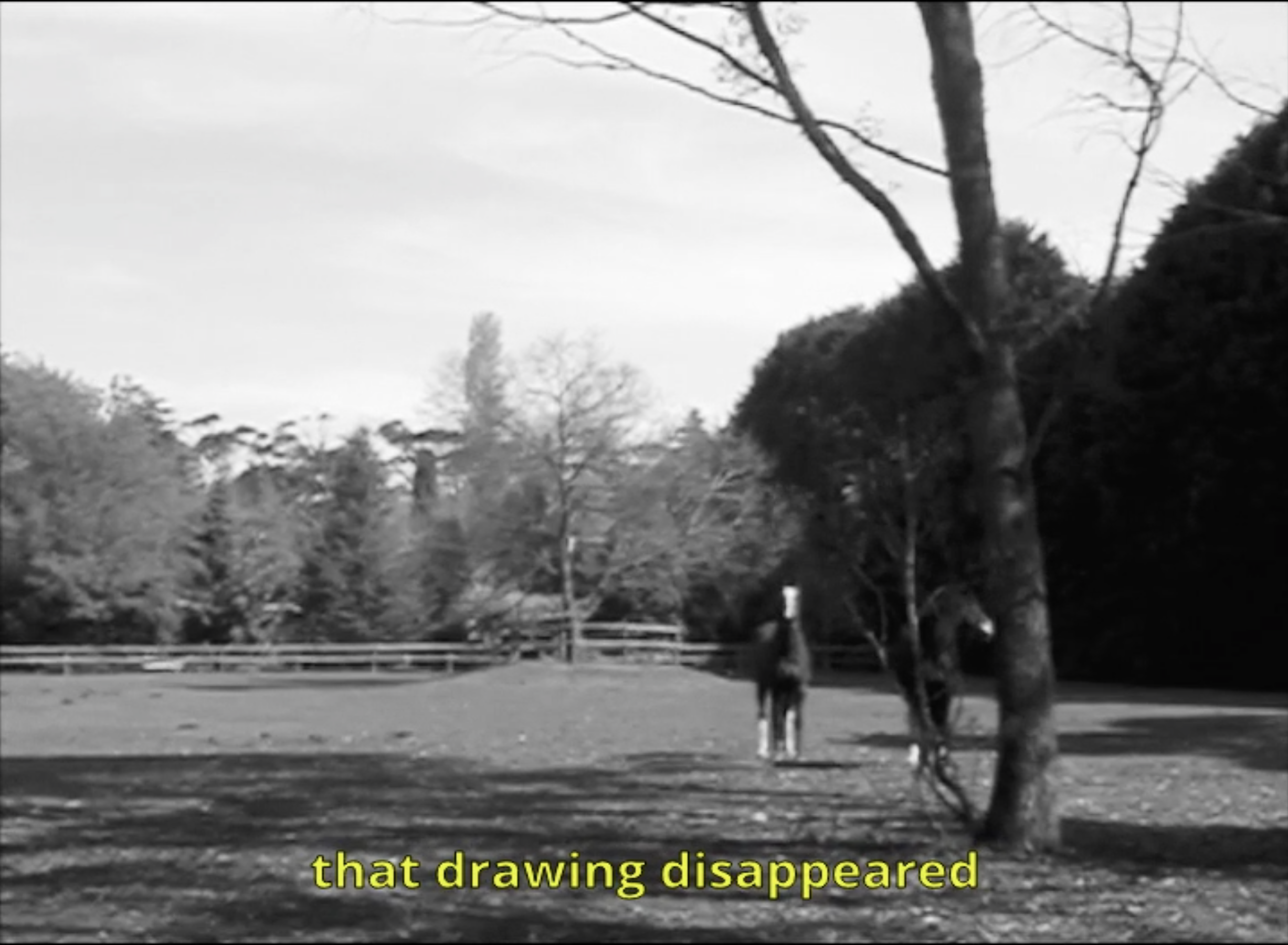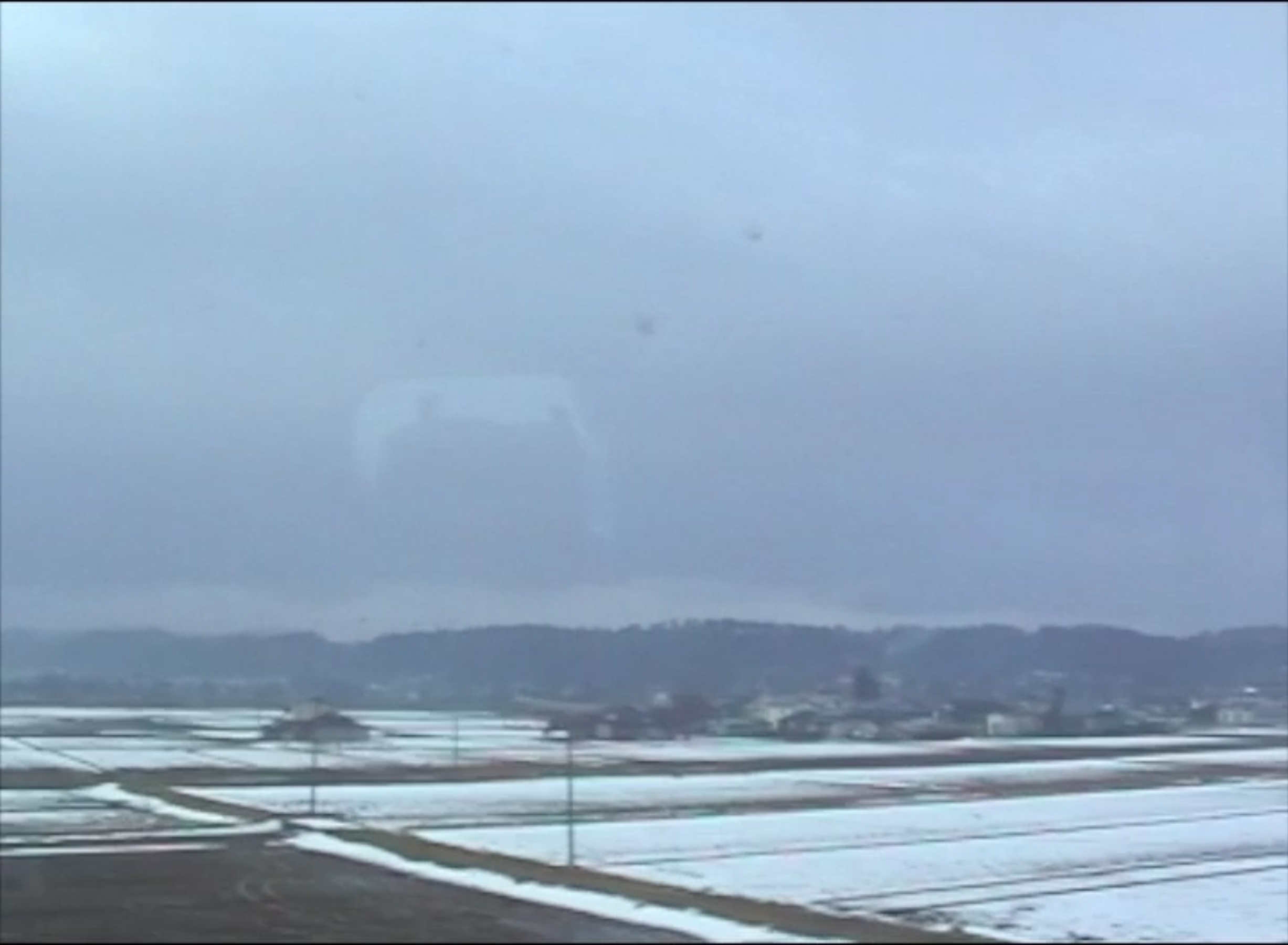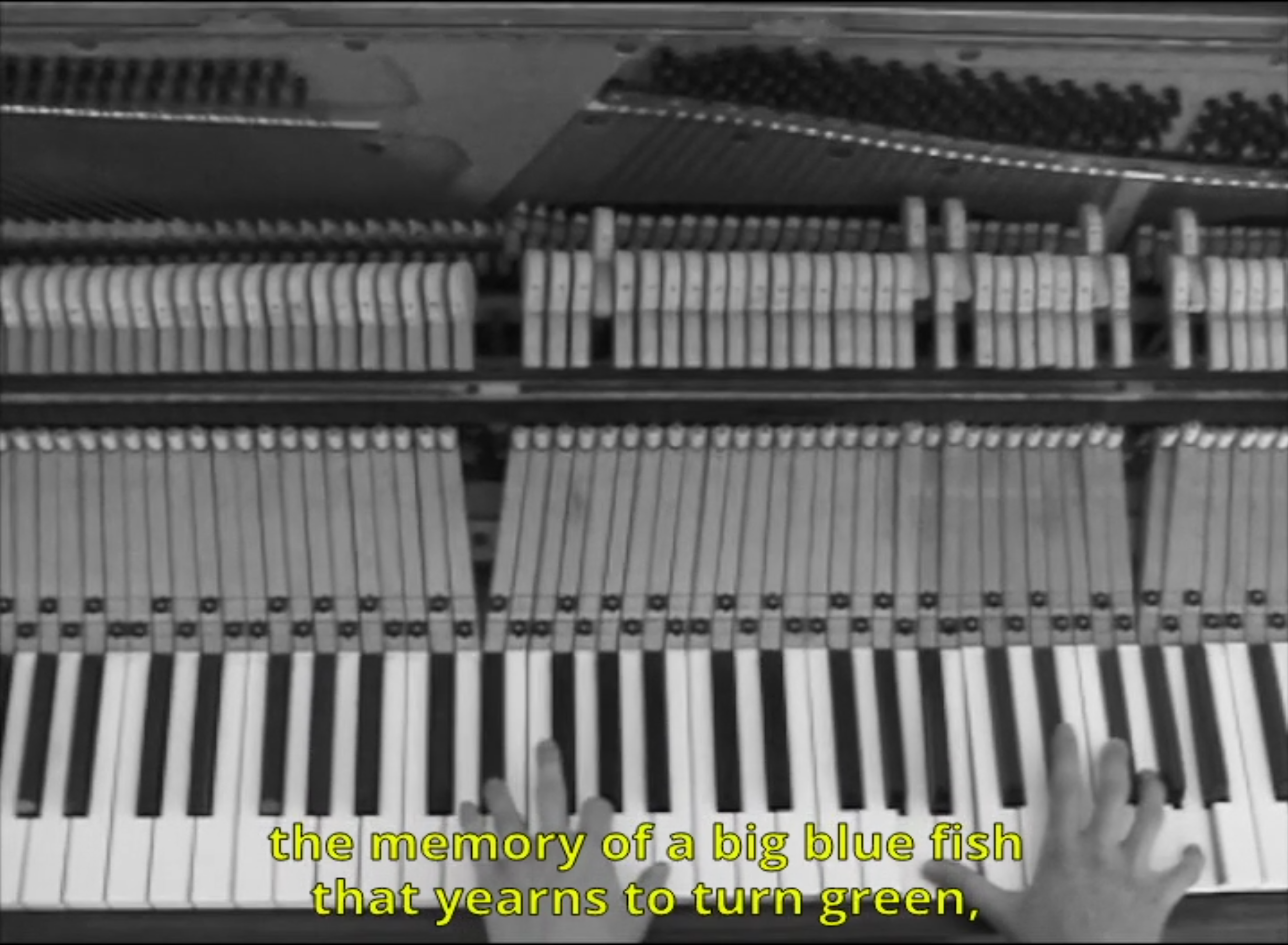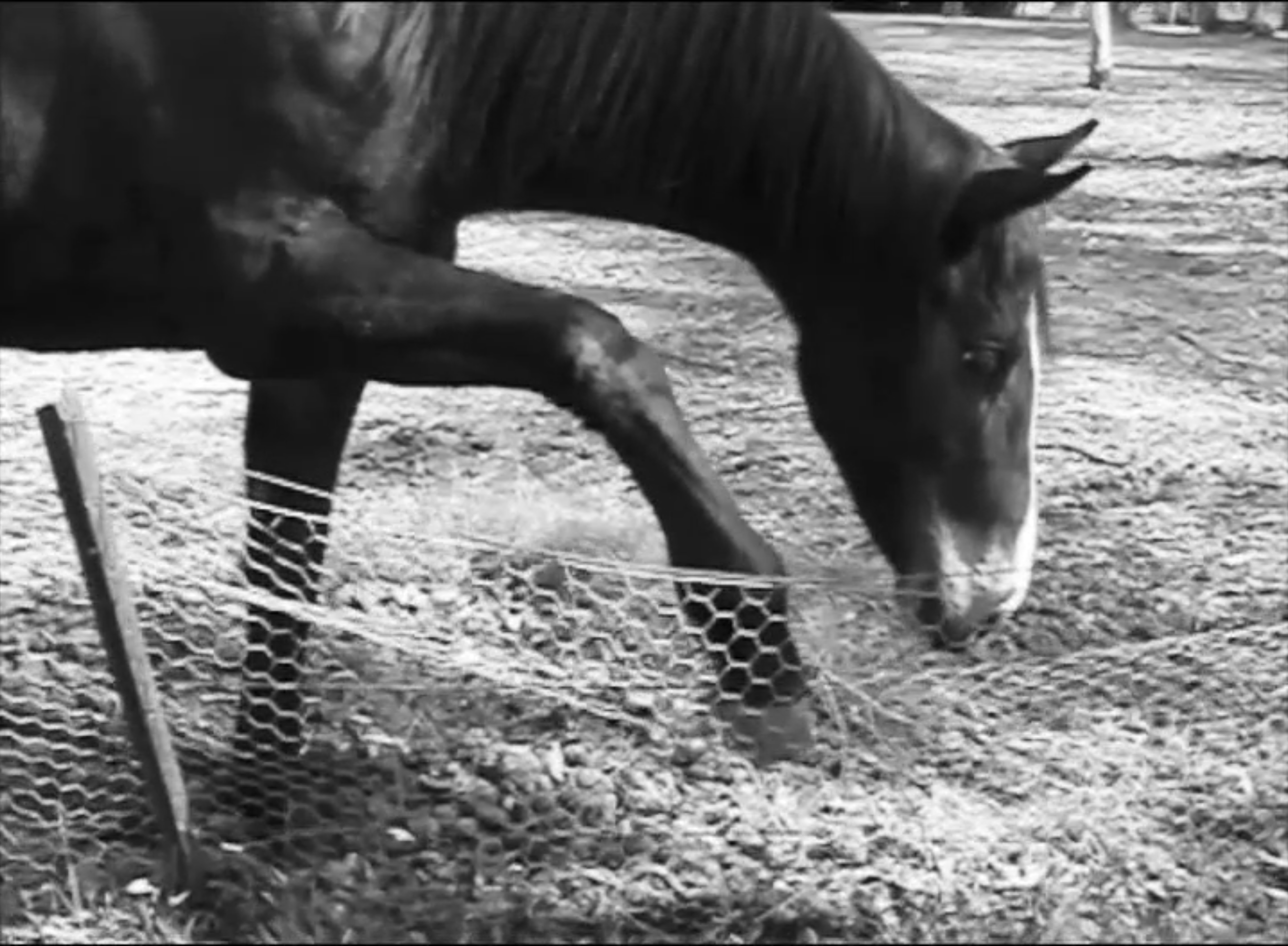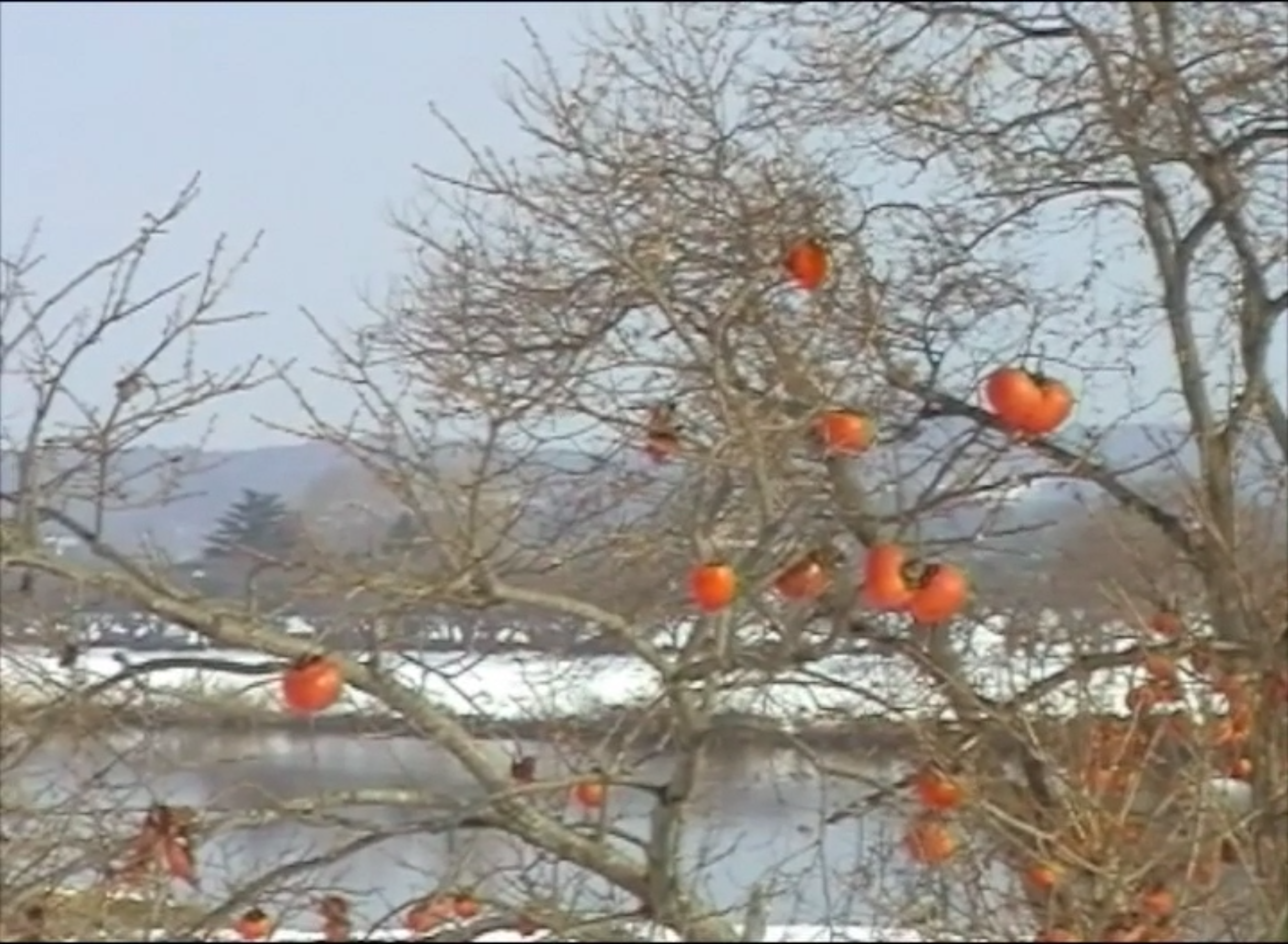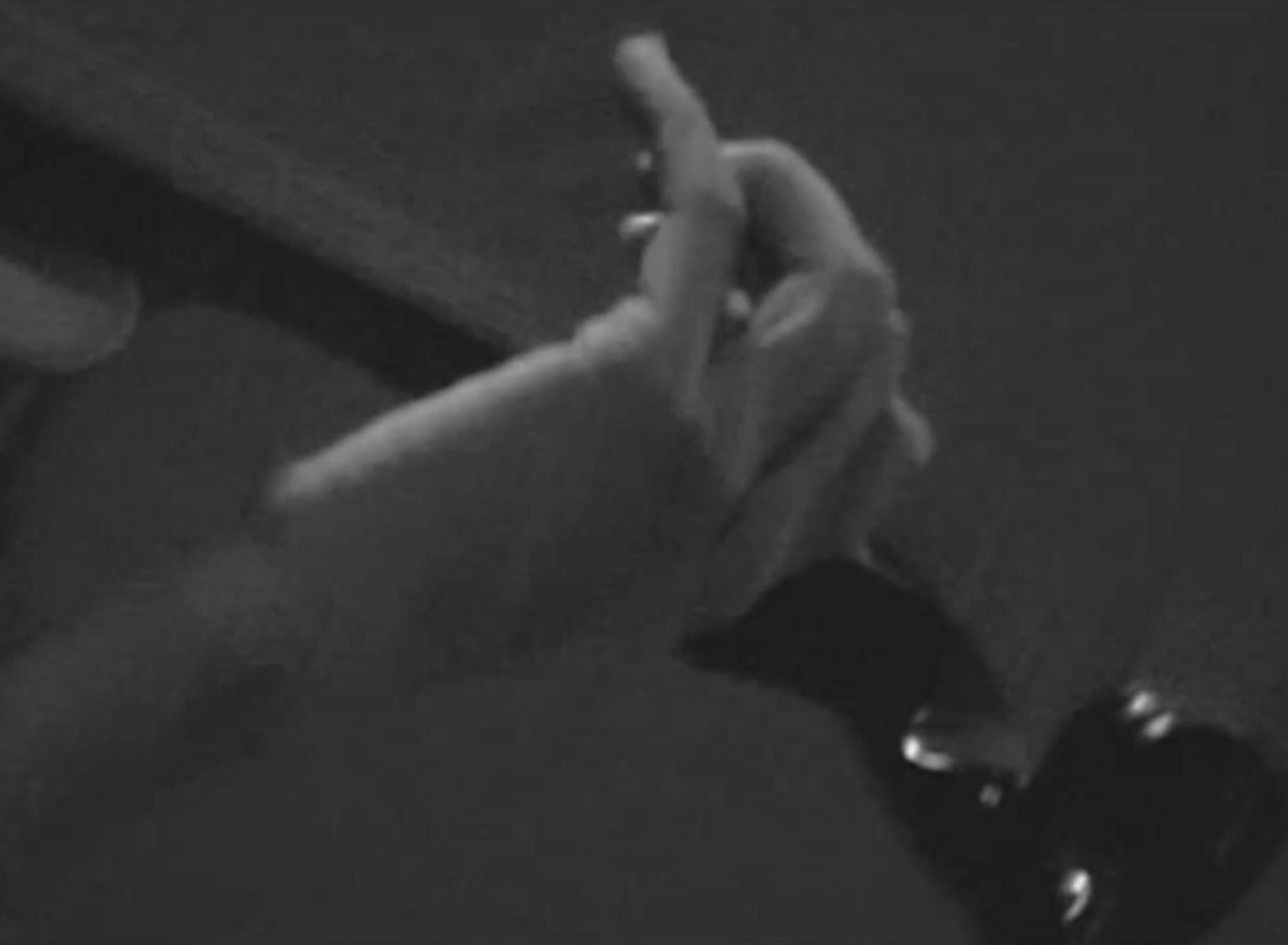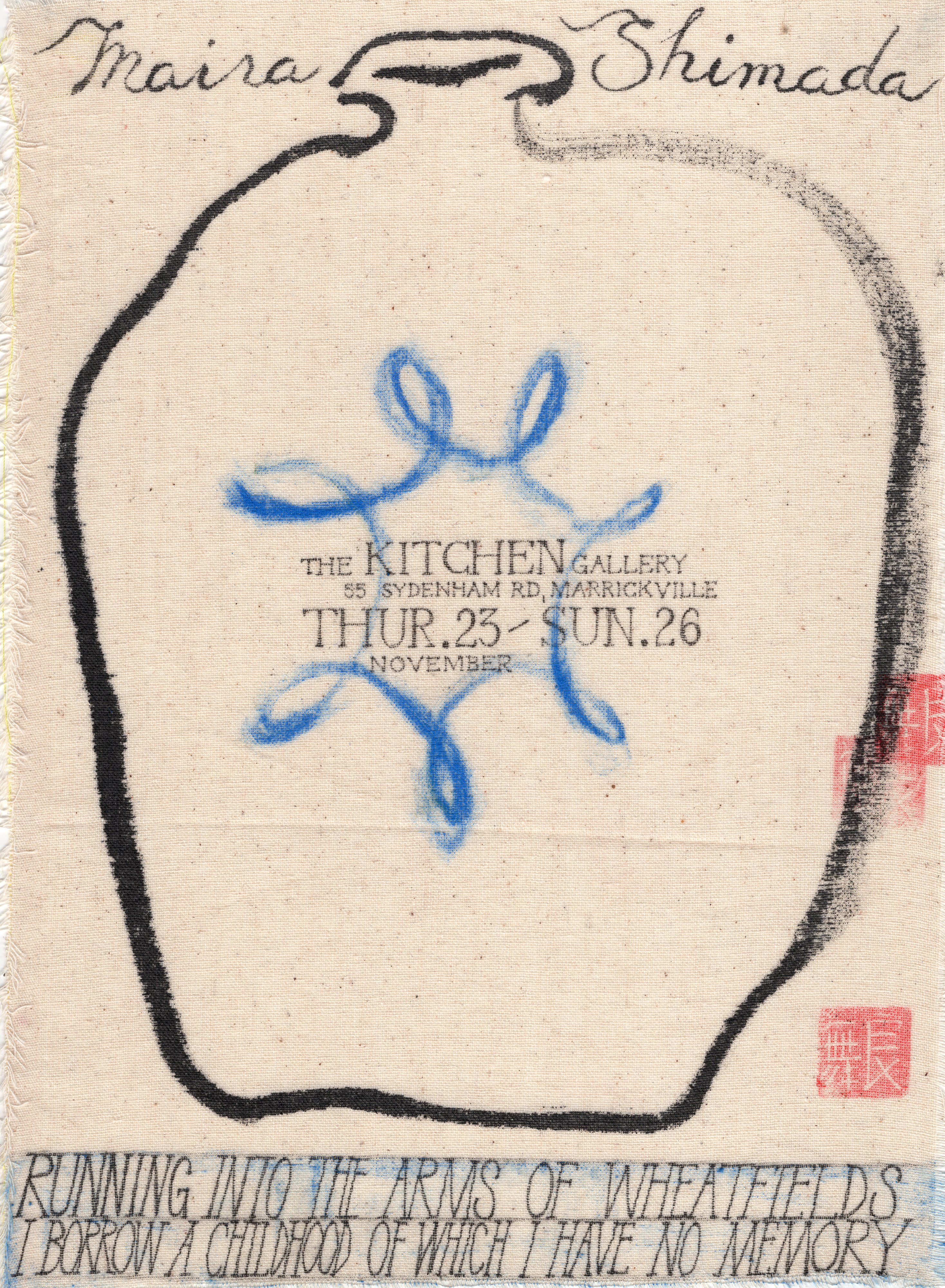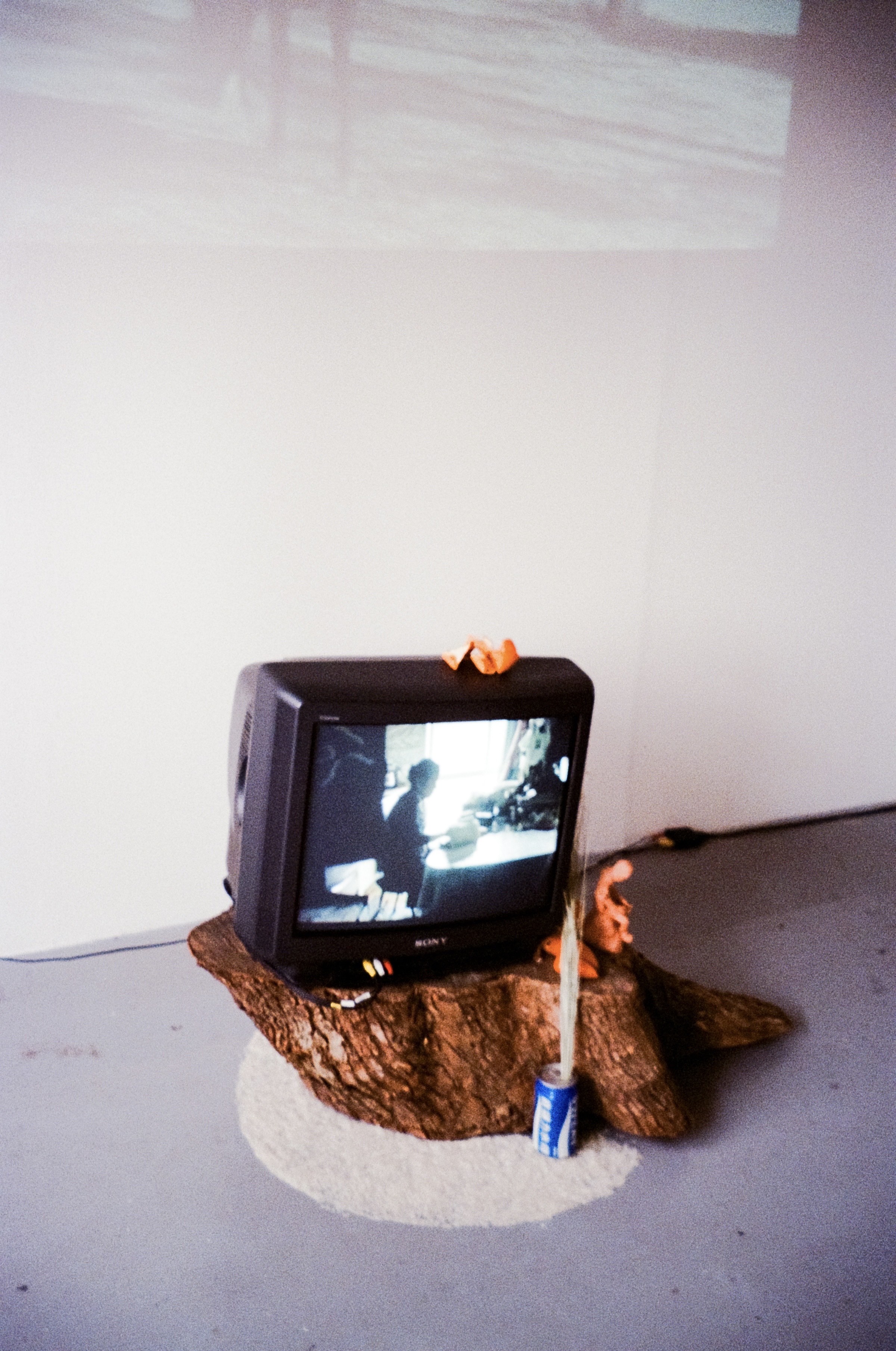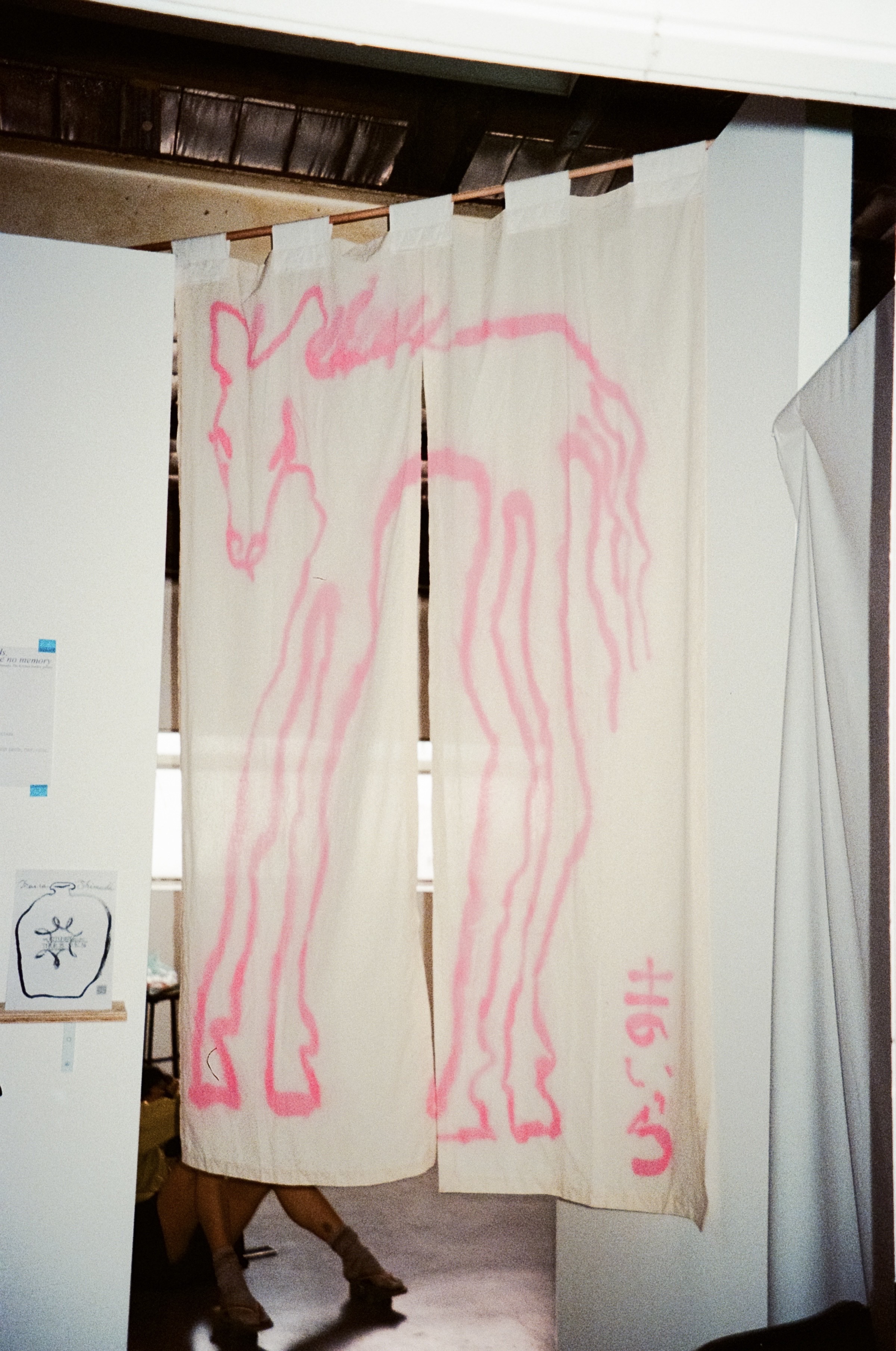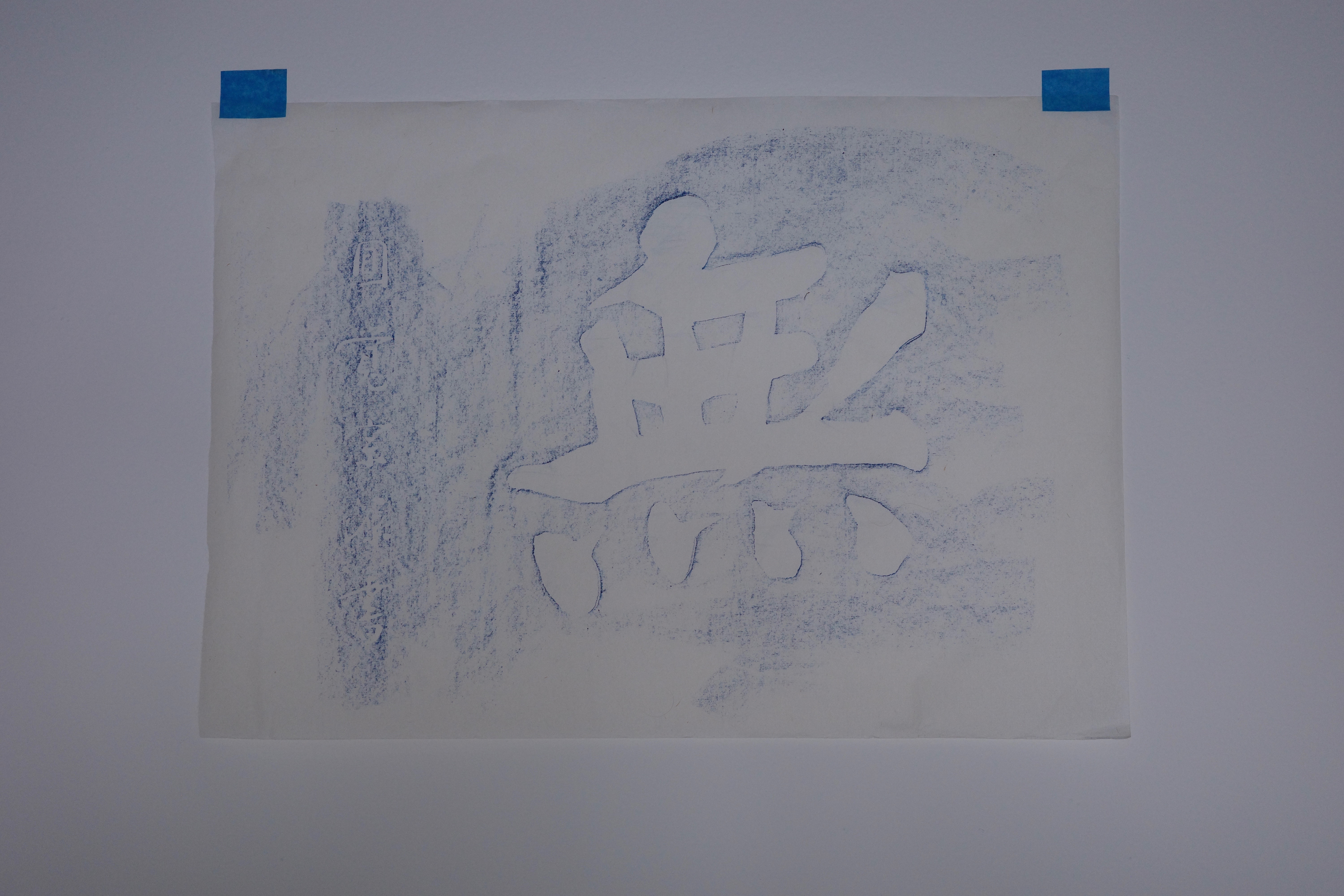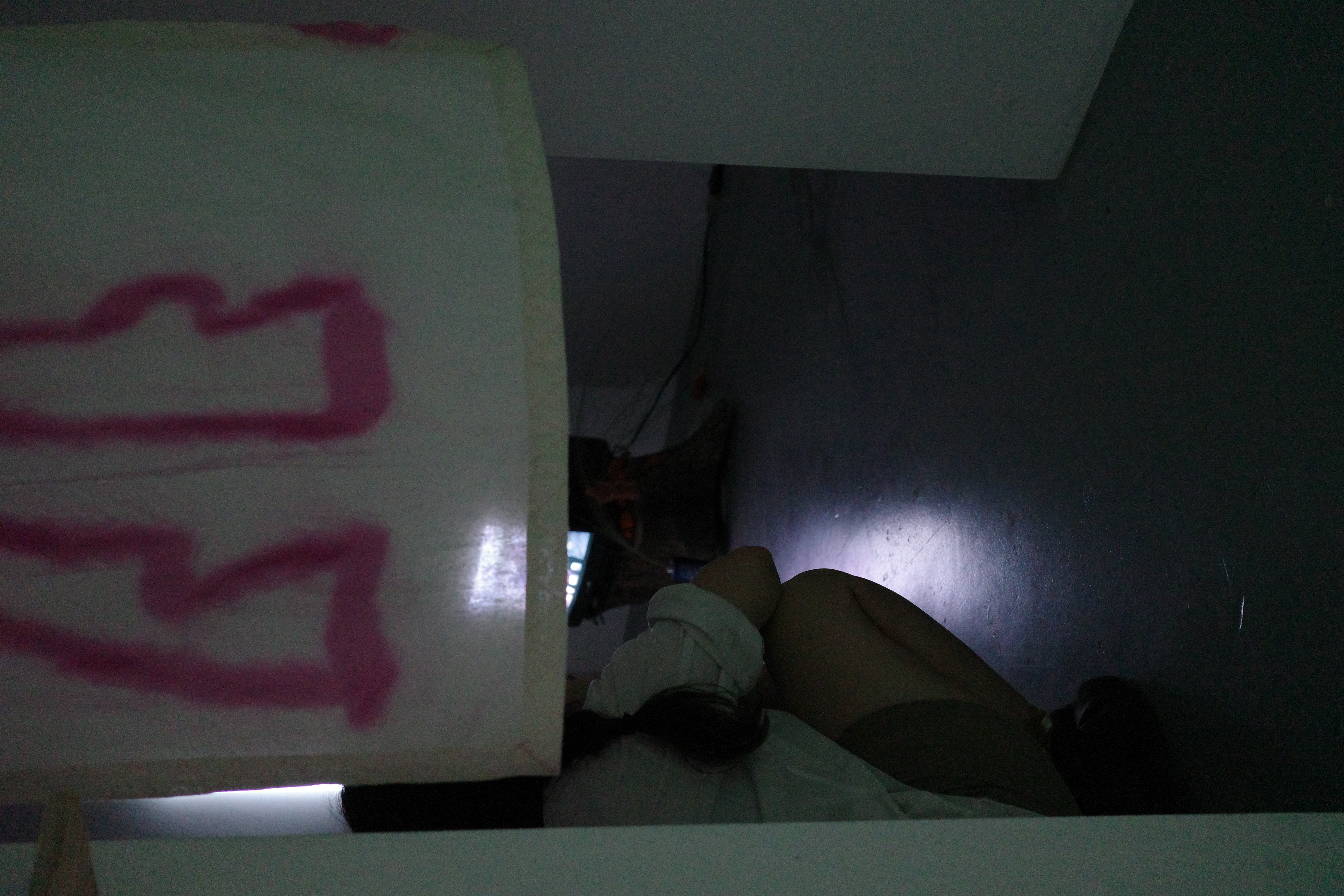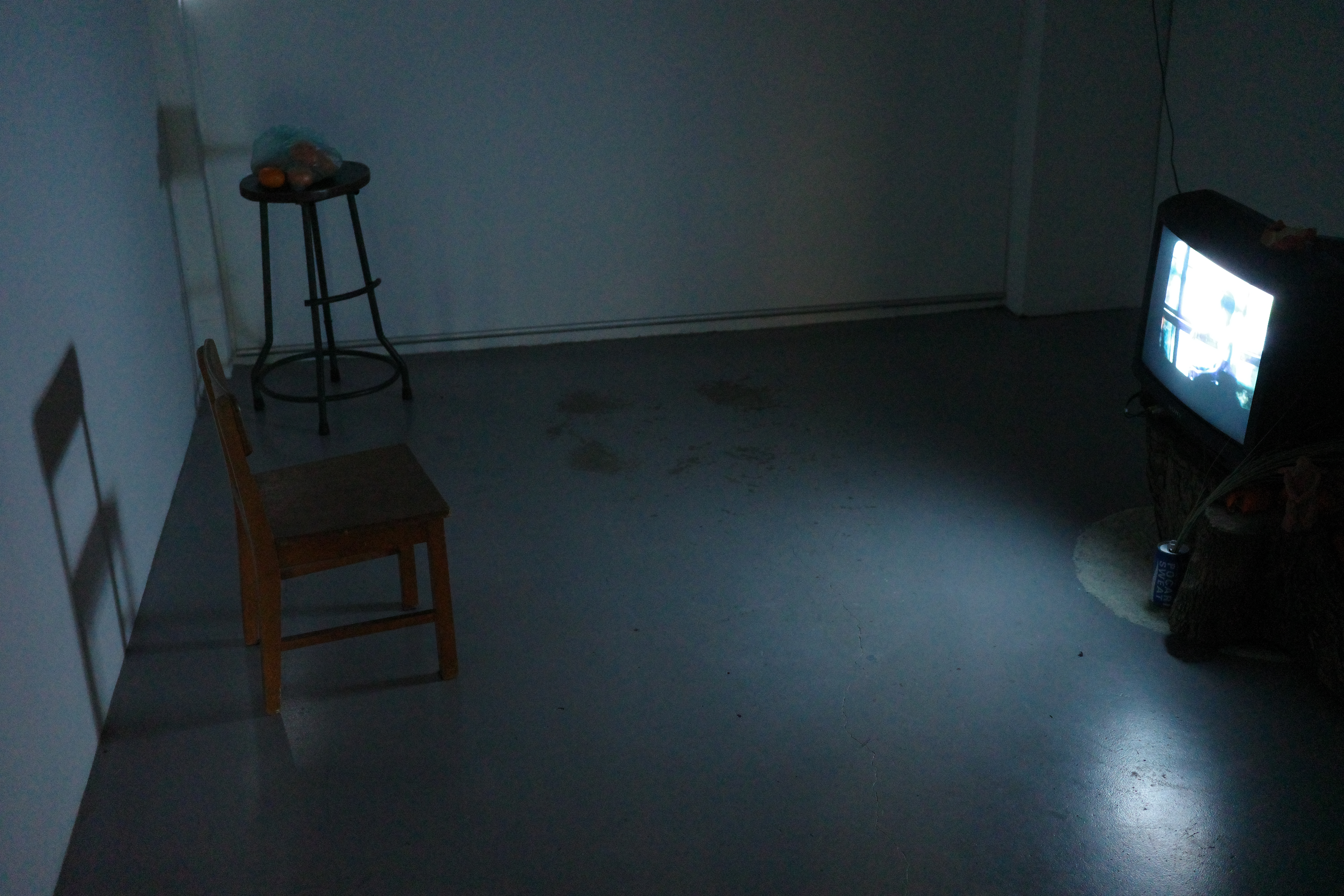Running into the arms of wheatfields, I borrow a childhood of which I have no memory (solo exhibition)
A solo exhibition held at The Kitchen Gallery in Sydney, Running into the arms of wheatfields, I borrow a childhood of which I have no memory presented video, installation, and textile works by Maira Shimada in November 2023. Salvaged from an enormous backlog documenting her visits to her grandparents in Tokyo, it is a hard-born yet willow-edged imagining of a world absent of time.
On opening night, viewings of Terebi Ongaku and Lilac were staged at 30-minute intervals in cinema fashion. Due to technical difficulties, two persons were required to start the cycle on separate channels, calling ‘3! 2! 1!’ from separate rooms to sync them correctly. Queuing attendees were herded in with the door closed behind them, and herded out upon conclusion. Terebi Ongaku was screened first as a projection, followed by Lilac on the CRT TV. Originally made as separate video works, the effect of screening them together led the artist to regard them as one single artwork, Lilac acting as an epilogue to Terebi Ongaku.
Please contact the artist directly if you would like to view the video works online.
Artist’s Note
“Following the rapid decline of my grandfather’s health and my inability to be with him during his death, these works explored a state of displacement that ventured beyond the geographical and cultural, as memory ‘fails to arrive at its destination of origin’. This exhibition came from an experimental and intuitive devotion to video and sound as a method of ‘dreaming’, two media which I explored in my practice for the first time.
Music and sound to me represent some of the earliest modes of expression and communication, having unfastened themselves from the visual and physical into something irrepressibly alive. Our childhood house chattered in German, Japanese and English, the Polish and Nepalese of our nannies, and the frequent practising of musical instruments. Nobody recalls what language my first words were in, or what language my brain began developing as its mothertongue. In a world of inconsistency, I imagine that childhood is full of these abstract displacements; language displaced by music, language displaced by migration, the audio of a visual memory displaced by a different audio or by silence, all swapping and playing like checker pieces.
I like to imagine the television as an organic object and vessel for image and sound, much like a person. Both video/audio works ‘Terebi Ongaku’ and ‘Lilac’ played on the idea of the ‘television’ as a vessel by which we receive and communicate information of various levels of importance. I had spent a great deal of time with my grandparents simply watching news broadcasts and entertainment programs on Japanese television. I had also watched my grandfather’s funeral through a computer screen on the other side of the world, from cleaning and dressing his deceased body to placing him in a casket under a mountain of flowers. ‘Terebi Ongaku’ featured audio recordings of my grandfather speaking of his own grandmother’s death, as well as recordings of computer-generated online translators ‘reciting’ extracts from my journal in robotic and not entirely accurate Japanese.
Set against visual footage collected during my time in Japan, it mimicked the constant ambience of the Japanese television broadcasters talking in the background of my grandparent’s home, and usurped these materials’ capacity to behave as clear memories.
For ‘Terebi Ongaku’ I also recorded the traditional tone clusters of Gagaku music on a Casio synthesiser. My grandfather was trained as a Gagaku musician and dancer at the Imperial Palace in his youth, before making a career as a violist. The sound of the Casio ‘dreaming’ the tone clusters traditionally played by a Japanese ‘sho’ instrument was another abstract displacement of a memory. The act of recollecting was ‘refracted’ in a sense by a series of ‘lenses’ (the television, the video camera, the computer-voice, the Casio), which mirrored my real experience of remembering, whether it be my or somebody else’s recollection.
As a footnote, ‘Yasujiro Ozu’s Headstone’ is a crayon rubbing of the director Yasujiro Ozu’s actual headstone, located in Kamakura. My side of the family was somewhat banished from our family grave and we do not have anywhere to put my grandfather’s bones, or to honour ancestors in the usual ceremonial way. Since I was forbidden from visiting or even knowing the whereabouts of the family gravesite, it’s become a habit to visit those of others. My mother once said to me that ‘because of the changes that came from war and modernisation, we don’t have any roots anywhere’. Like the grains of rice forming the physical bed for ‘Lilac’, other odd things gain interest to me.”

